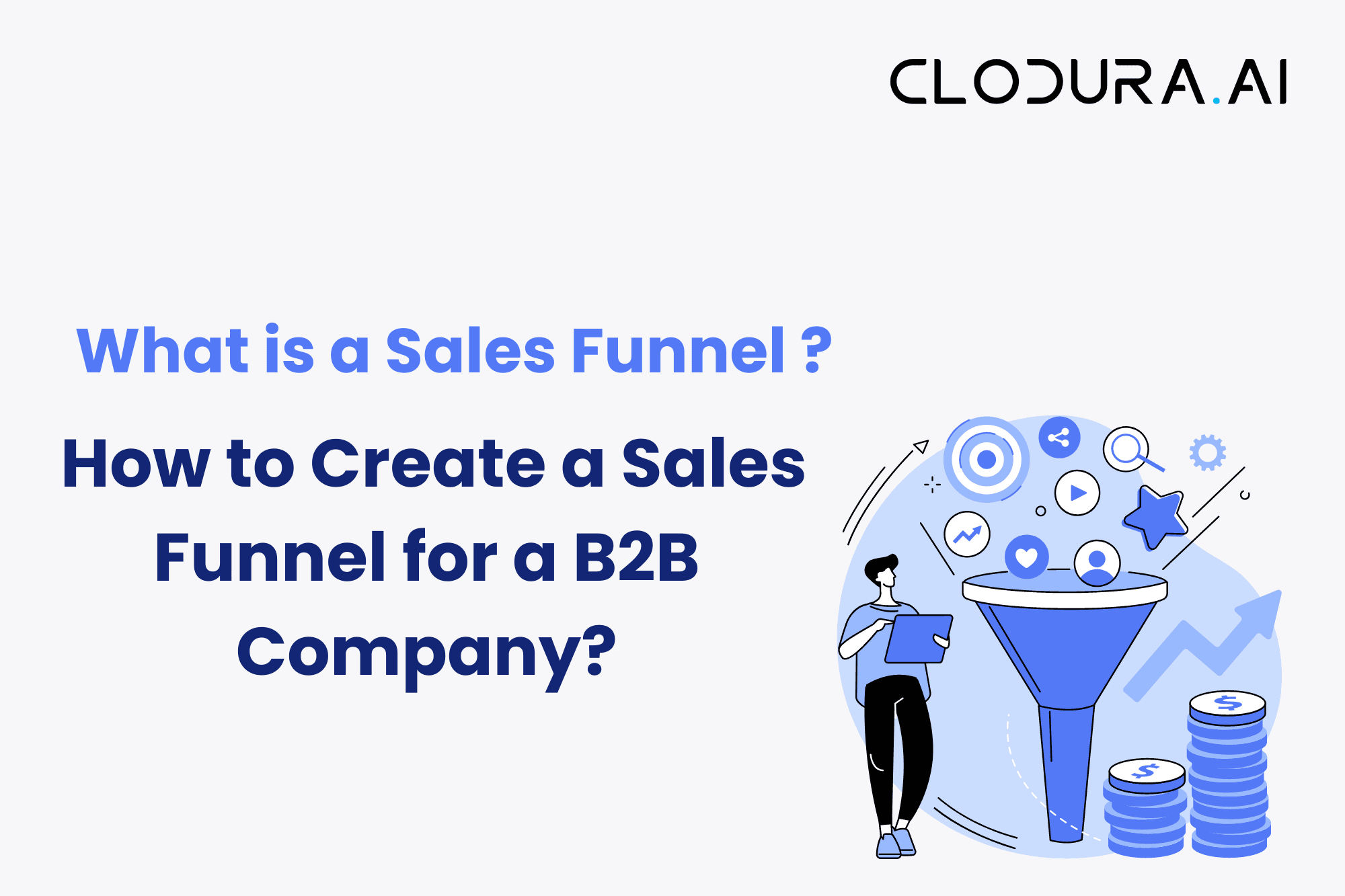Businesses, irrespective of their sizes, across the industries employ many tactics such as customized content, lead magnets, webinars, and many others to attract quality leads and turn them into loyal customers. However, at times, prospects drop out of the sales funnel without any purchase leaving sales teams in terrible pain and frustration.
This pain and frustration can be alleviated by creating a robust sales funnel that strives to meet evolving customer expectations consistently. Let’s first understand what exactly the sales funnel is.
What Is A Sales Funnel?
A sales funnel is a marketing concept that outlines the journey a lead goes through to become a customer. It is often visualized as a funnel, with the widest part at the top and narrowing down as a lead moves down the funnel. A typical sales funnel has three parts: top, middle, and bottom.
A sales funnel starts with a large number of potential buyers who are attracted to a product or service at the top. As the prospects move through the funnel, their numbers keep getting reduced based on the company’s business model and customer expectations. By the middle of this journey, only a handful of leads remain that may end the sales cycle with a closed-won or closed-lost deal.
Conceptually this journey may appear like a straight highway that starts with an attraction and ends with a purchase. But, in reality, it is not always that straight and consistent a journey. A well-structured sales funnel is the way to make this journey more predictable and consistent. Let’s have a look at how to build an effective sales funnel for a B2B company.
How to Create a Sales Funnel for a B2B Company?
● Understand what your customers want
As per a 2021 study, approximately 75% of B2B companies find it difficult to come up with effective marketing strategies for long-term growth. Irrelevant information in the form of ads, promotions, and articles not only dissatisfies prospects but also costs a lot of money and damages your business reputation.
To create a functional B2B sales funnel you need to understand your customers, their pain points, expectations, and interests. Website monitoring and analysis give you valuable insights into customer behavior that empowers you to offer your prospects relevant products and create intriguing offers.
● Define your goals
Having understood your audience, it’s time now to understand yourself! Yes, you must define your business goals such as more leads, product demos, email marketing, or purchases. With these defined goals, it becomes easier to expect a specific result from each stage of the funnel. These results can help you measure the proper functioning of your sales funnel.
● Attract your customers’ attention
The age-old problem of plenty and inherent distrust make it difficult to attract customers’ attention. However, a thorough understanding of your customers and your defined goals make it easier to draw their attention and drive them to the top wide end of the funnel. Some offerings such as a free trial, an e-book, and personalized relevant content at the right time can generate interest and draw your customers’ attention to your product.
● Qualify leads to determine their genuine need to buy
Attraction does not mean genuine interest or need. Even if the leads at the top wide end of your funnel have shown interest and signed up for personalized newsletters, they might not be a good fit for your product. It is crucial to ask the right questions directly to gauge their genuine need to buy as you don’t want to waste your time and energy pursuing leads that are not yet sales-ready.
● Nurture your qualified leads
After getting intensely attracted to your product, a lead goes silent and the momentum suddenly stops. It’s time to warm these leads up, nurture them, clear all the obstacles as much as possible, and encourage their movement down to the funnel.
Some of the techniques to nurture a lead include a simple email drip campaign, an extended trial, special discounts, paid retargeting, etc. Personalized drip campaigns allow you to demonstrate a keen understanding of their pain points and a clear intention to offer your product as the solution to those pain points. Warming up these cold leads with such customized content consistently and regularly surely gets you that much-awaited sale!
● Close the deal
It is the stage where either you close the deal won or lost. It is said that approximately 50% of large B2B purchases are made by leads that got supported throughout all the stages of a sales funnel. Lead nurturing efforts play a significant role in closing the deal with a sale. Irrespective of whether you’ve closed the deal with a sale or not, keeping the communication channels open is necessary to keep the sales funnel functioning optimally.
The open communication channels help you retain the customers and create a loyal relationship with them. They also enable you to nurture those who didn’t convert with an effective nurturing strategy that encourages them to purchase down the road.
● Optimize your funnel
Each stage of the sales funnel is about evolving customer expectations. If at any stage these expectations are not met, the most qualified leads may slip through the cracks in your funnel. It is important to keep tracking blind spots and missed opportunities in the funnel. Your sales funnel needs to be constantly optimized in a way that leads remain engaged, and interested, and make their way down to make a purchase.
Final Thoughts
When you break down an otherwise difficult task of creating a B2B sales funnel in these steps that we’ve discussed, it becomes easier to create one. A well-built and constantly optimized B2B sales funnel that understands customer expectations thoroughly and meets them at every stage helps businesses increase their sales and build a loyal customer base.

